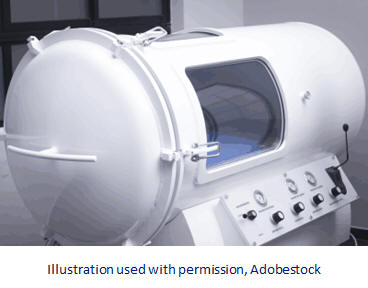|
Wound Care Options
Traditional Care
•Wet to Dry
•Dakins
•Acetic Acid
•Hydrogen Peroxide
(H2O2)
Traditional wound care includes: First, Wet to dry. This is an old method and is no longer the standard of care, although it is still used. There are many better ways to debride wounds using advanced wound treatments or surgical debridement. Moist wound healing is now the standard. Products such as Dakins and Acetic acid may be used for a short period to decrease bacteria levels, but generally not longer than 10 days-2 weeks. These products are cytotoxic to healthy tissue. Advanced Wound Care Products There are many advanced wound care dressings out there; how do you choose one? The dressing should provide the right amount of moisture to the wound. It should fill all the space in the wound--not just sit on it. The absorbency of the dressing should be matched to the amount of drainage. If there is a lot of drainage, a product that will absorb more and allow less frequent dressing changes may be required. If the wound is dry... add a product that has moisture. Products used should be appropriate to the wound tissue. If is needs debriding--a debriding agent should be used. And the product chosen should act as a bacterial barrier.
Debriding agents: Ointments, such as Santyl® can augment wound care. This ointment is applied to a clean and rinsed wound area. The exudate activates the collagenase enzyme to assist in debridement of necrotic tissue. It should not be used with dressings that contain silver or iodine, which can deactivate the collagenase enzyme. Antimicrobial Gauze Dressings: A dry dressing used to cover dressings to minimize evaporation from the tissue interface or dressing. AMD dressings can reduce risk of infection by inhibiting bacterial growth. An example is Mesalt® impregnated absorbent dressings for heavy exudates and when daily dressing changes may be required. Foams: These allow for absorption of drainage, and generally do not stick to the wound. They are padded to maintain moisture and protection. Transparent Film Dressings: Consider using film dressings for autolytic debridement when the individual is not immunocompromised. Also consider using film dressings as a secondary dressing for pressure ulcers treated with alginates or other wound filler that will likely remain in the ulcer bed for an extended period of time (e.g., 3 to 5 days).
Most advanced wound care products can be changed every 2-7 days—details will be found on the package insert. You may know that advanced wound care products are often more expensive than wet to dry. But most times they need to be used much less frequently, saving nursing time and the number of visits. They are also very effective at optimizing wound healing. Hydrogels: These are used to add moisture to a wound that is somewhat dry and allows for granulation. They are usually changed every 1-3 days. Hydrofiber Dressings: Hydrofiber dressings are used for wounds with moderate to high exudate levels and absorbs up to 30 times its weight and, because it gels when absorbing fluid, it can provide a moist environment, autolytic debridement, and removal without trauma. This type of dressing may assist in infection control because it keeps the bacteria in the fluid that is absorbed making it less available to the wound and reducing airborne transmission of bacteria with dressing changes. An example of this product is Aquacel® Ag Extra™, which also contains ionic sliver for reduced risk of infection for up to 14 days. Alginate Dressings: These are made from seaweed. They are used for moderately and heavily exudating wounds and are generally changed every 1-3 days.These have similar uses to the hydrofiber dressings. The differences include that alginate dressings may absorb 20 times its weight and can be a hemostatic agent. Both hydrofiber and alginate dressings can increase wear time, absorption, and antimicrobial benefits, provide anti-inflammatory properties and odor reduction, and reduce the need for auxiliary supplies. Hydrocolloids: These are occlusive dressings which are used on a stage 2 or shallow stage 3 pressure wound or other shallow wounds. They allow for autolytic debridement of wounds. They are not to be used on diabetic feet. Collagen Dressings: This type of dressing is used on partial and full thickness wounds with a full spectrum of exudates. It supports the development of new cells at the wound site. The products are animal products that provide a sort of “scaffolding” on which new tissue can grow. It assists in several wound healing activities, including debridement, angiogenesis (new blood vessels), and reepithelialization (migration of epidermal cells to wound area). Honey Dressings: Comprised from sterile honey products which provide for moist wound Healing. They also claim to decrease the bio burden in the wound. Cadexomer Iodine dressings: These are iodine dressings that aren’t cytotoxic to the wound. Silver dressings: These come in gels, foams, alginates and fibers and help decrease the bio burden.
|
||||



